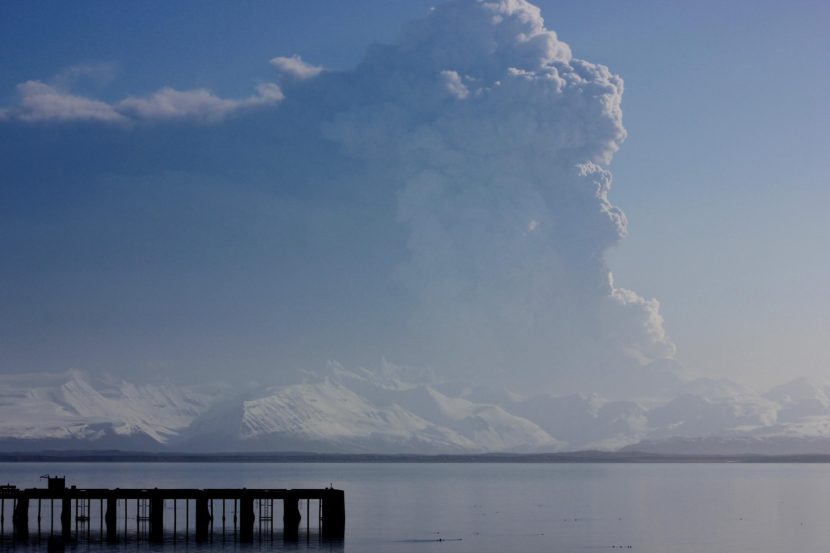
Scientists have increased the alert level for Pavlof Volcano for the second time this month. On Thursday, the Alaska Peninsula volcano showed signs of low-level eruptive activity, prompting officials to raise its alert level from “advisory” to “watch.”
Dave Schneider is a geophysicist with the U.S. Geological Survey at the Alaska Volcano Observatory.
“We saw pretty vigorous de-gassing of steam in our web camera images, and we got some detections of volcanic ash in satellite views,” Schneider said.
But that doesn’t necessarily mean there will be an eruption.
Schneider said Pavlof’s current activity is “quite a bit lower” than in March when the volcano erupted, spewing ash 37,000 feet into the atmosphere and causing dozens of flights to be canceled. He also said thermal signals have not indicated that new lava is rising to the surface.
But thanks to its ongoing seismic activity, Schneider said are scientists are monitoring Pavlof closely.
“This is a very slippery volcano,” Schneider said. “It can go from low-level activity and ramp up without a lot of precursory activity.”
For now, scientists will keep an eye on Pavlof’s temperature and ash emissions by satellite and webcam.
